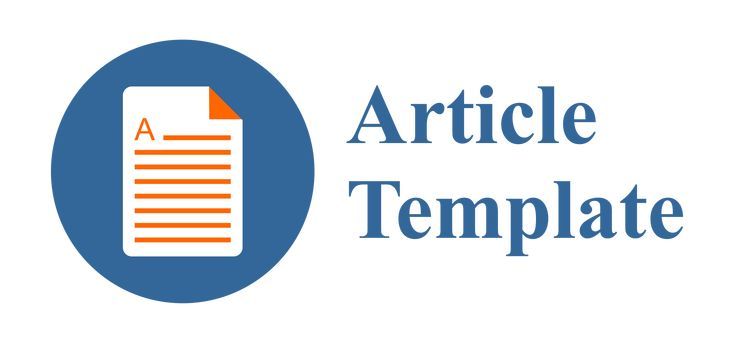The effectiveness of Augmented Reality based Learning on Vocational Competencies of Vocational School Students
DOI:
https://doi.org/10.29408/edumatic.v4i2.2653Keywords:
Augmented Reality, Vocational Competence, Vocational School, Learning MediaAbstract
This research is based on limited laboratories in vocational high schools in the city of Pekanbaru. Students are could not to use one computer device (PC) for each. The actual condition is one PC is used by 2-3 students. This fact has an impact on the achievement of vocational competence. The proposed solution is to present a virtual laboratory concept based on Augmented Reality (AR). The purpose of this study was to measure the effectiveness of AR based learning media on the achievement of vocational competencies of. The type of research applied is equals-experimental with two groups pretest-posttest design method. The population and sample in this study were the Multimedia Study Program of SMK Muhammadiyah 2 Pekanbaru City. The results obtained were learning to use AR media is effective for increasing the learning outcome in the basic computer network material. The use of augmented reality-based learning media can be applied to vocational learning in SMK with material adjustments designed according to the needs of the applicable curriculum.
References
Arista, F. S., & Kuswanto, H. (2018). Virtual physics laboratory application based on the android smartphone to improve learning independence and conceptual understanding. International Journal of Instruction, 11(1), 1–16. https://doi.org/10.12973/iji.2018.1111a
Haryani, P., & Triyono, J. (2017). Augmented Reality (Ar) Sebagai Teknologi Interaktif Dalam Pengenalan Benda Cagar Budaya Kepada Masyarakat. Simetris: Jurnal Teknik Mesin, Elektro Dan Ilmu Komputer, 8(2), 807-812. https://doi.org/10.24176/simet.v8i2.1614
Herlandy, P. B., Amien, J. Al, Pahmi, P., & Satria, A. (2019). A Virtual Laboratory Application for Vocational Productive Learning Using Augmented Reality. Jurnal Pendidikan Teknologi Dan Kejuruan, 25(2), 194–203. https://doi.org/10.21831/jptk.v25i2.26504
Jaya, H. (2013). Pengembangan Laboratorium Virtual untuk Kegiatan Paraktikum dan Memfasilitasi Pendidikan Karakter di SMK. Jurnal Pendidikan Vokasi, 2(1), 81–90. https://doi.org/10.21831/JPV.V2I1.1019
Klotz, V. K., Billett, S., & Winther, E. (2014). Promoting workforce excellence: Formation and relevance of vocational identity for vocational educational training. Empirical Research in Vocational Education and Training, 6(1), 1–20. https://doi.org/10.1186/s40461-014-0006-0
Majid, N. W. A., & Sudira, P. (2017). Proses perolehan kompetensi TIK melalui program praktik industri siswa SMKN 2 Pengasih Kulon Progo. Jurnal Pendidikan Vokasi, 7(1), 14-29. https://doi.org/10.21831/jpv.v7i1.12712
Okimoto, M. L. L., Okimoto, P. C., & Goldbach, C. E. (2015). User experience in augmented reality applied to the welding education. Procedia Manufacturing, 3, 6223-6227. https://doi.org/10.1016/j.promfg.2015.07.739
Pischetola, M. (2011). Digital media and learning evolution: A research on sustainable local empowerment. Global media journal, 10(18), 1-11.
Sannikov, S., Zhdanov, F., Chebotarev, P., & Rabinovich, P. (2015). Interactive educational content based on augmented reality and 3D visualization. Procedia Computer Science, 66, 720-729. https://doi.org/10.1016/j.procs.2015.11.082
Sirakaya, M., & Kilic Cakmak, E. (2018). Effects of augmented reality on student achievement and self-efficacy in vocational education and training. International journal for research in vocational education and training, 5(1), 1-18.
Sudira, P. (2017). Praksis Pendidikan Vokasional Di Indonesia Unggul Dan Bermartabat. Prosiding Seminar Nasional Pendidikan Vokasional (SNPV), 1–11. Yogyakarta: Universitas Negeri Yogyakarta
Torres, F., Tovar, L. A. N., & Egremy, M. C. (2015). Virtual interactive laboratory applied to high schools programs. Procedia Computer Science, 75, 233-238.
Wei, X., Weng, D., Liu, Y., & Wang, Y. (2015). Teaching based on augmented reality for a technical creative design course. Computers & Education, 81, 221-234. https://doi.org/10.1016/j.compedu.2014.10.017
Winther, E., & Achtenhagen, F. (2009). Measurement of vocational competencies. A contribution to an international large-scale assessment on vocational education and training. Empirical research in vocational education and training, 1(1), 85-102.
Wisnugroho, S., Prasetyo, A. D., & Kurniawan, R. (2015). Aplikasi Android Pengenalan Rangka Manusia Berbasis Augmented Reality. Seminar Informatika Medis , 77–86. Yoyakarta: Universitas Islam Indonesia.
Downloads
Published
How to Cite
Issue
Section
License
All articles in this journal are the sole responsibility of the authors. Edumatic: Jurnal Pendidikan Informatika can be accessed free of charge, in accordance with the Creative Commons license used.

This work is licensed under a Lisensi a Creative Commons Attribution-ShareAlike 4.0 International License.




